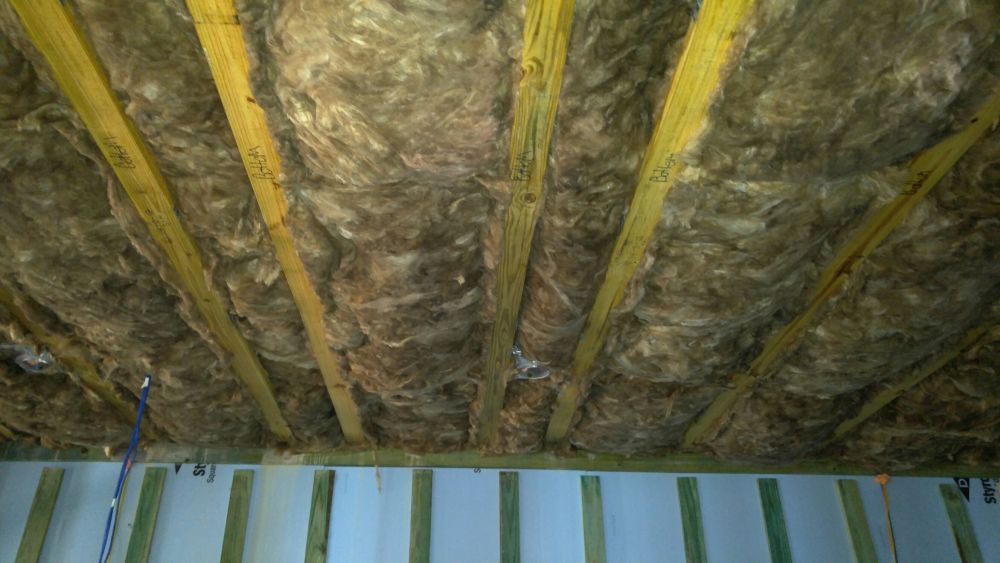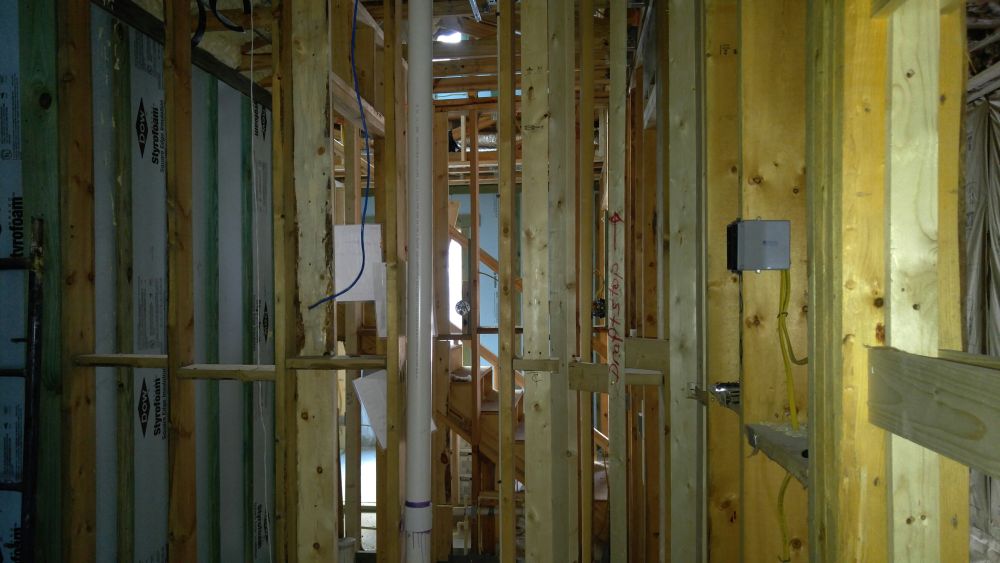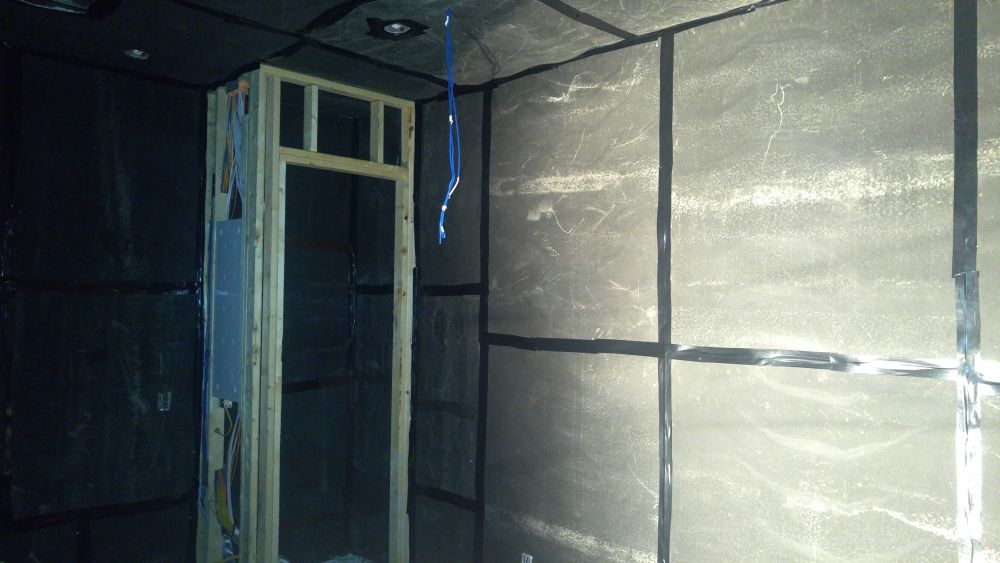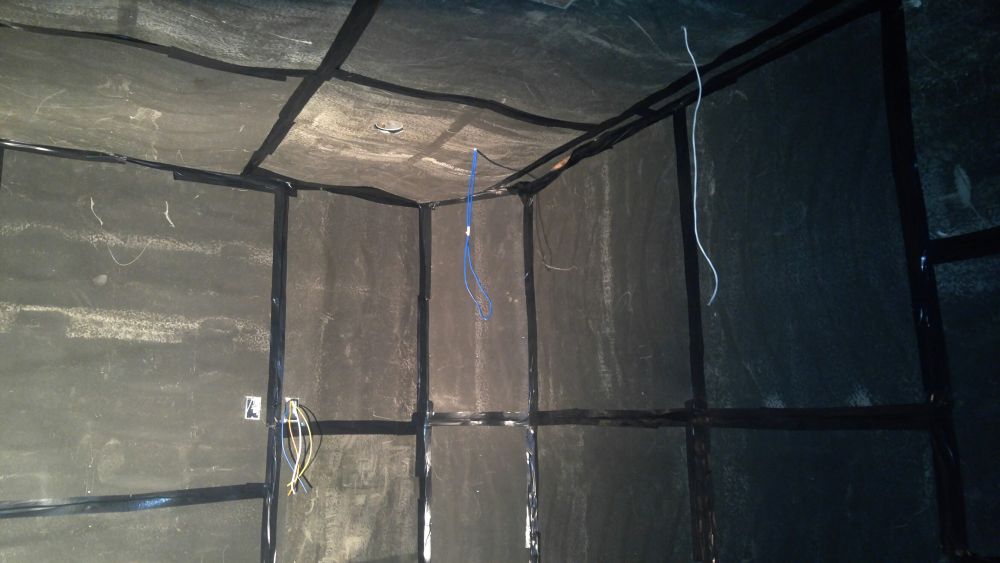A common request we get is to soundproof sensitive areas of homes, from production houses to luxury abodes. The most sensitive areas tend to be Home Theaters, Master Bedrooms, and Home Offices.
In the case of a recent custom luxury home in Tampa, off of Westshore Boulevard, there was a client with standard 2”x4” stud construction with a few sensitive areas in the home.
Soundproofing the Home Theater
The Home Theater was located centrally in the home, and was located directly beneath the young daughter’s bedroom. The Open Web Truss Flooring provided little STC rating to the floor above. There was a substantial amount of batt insulation throughout the house, but as discussed in previous articles, this only yields a small amount of actual sound attenuation. The batting is primarily designed for thermal insulation, with a small improvement in STC rating.
After an initial site assessment, we determined the ideal product for this home would be the Wall Blokker Pro under the ½” Drywall.
Prior to installation, it’s critical to confirm that all framing and electrical inspections are complete. The soundproofing membranes stretch over the studs and staple directly into them, meaning any electrical or structural defects behind the sound-blocking materials will not be visible once installation has begun.
Because the theater is expected to create a fair amount of airborne noise upward, we also specified the material for the ceiling of the media room. This installation is the trickiest. If the drywall is ready, the material may be simply applied to the back of the drywall and lifted upward. However, if it is not, a 2-man crew with proper-sized ladders can apply it by hand. This typically takes 2-3 times longer than wall applications.
Tape may be applied sparingly on horizontal seams or when butt seams are not located directly over existing studs. Vinyl tape works best, but ultimately, the material is held in place by the drywall over top.
Remember – when soundproofing for structure-borne noise, apply the membrane to the floor above. When treating airborne noise from below, treat the ceiling of the lower floor.
Soundproofing the Home Office
A secondary concern of our client was the Home Office. In this case, the concern was incoming noise rather than outgoing. One layer of the soundproofing membrane was also sufficient to increase the STC of this wall from 32 to 41, a decrease of approximately 50%.
In general, with wood studs, we implemented the Wall Blokker PRO due to its additional decoupling capabilities. Unlike a bedroom-to-corridor adjacency that requires an STC rating of 45+, we are able to settle for an STC 40 wall around the home office. Careful attention should be paid to the door, since large thresholds allow significant flanking under and around the door panel.
Before & After Photos of Home Soundproofing






